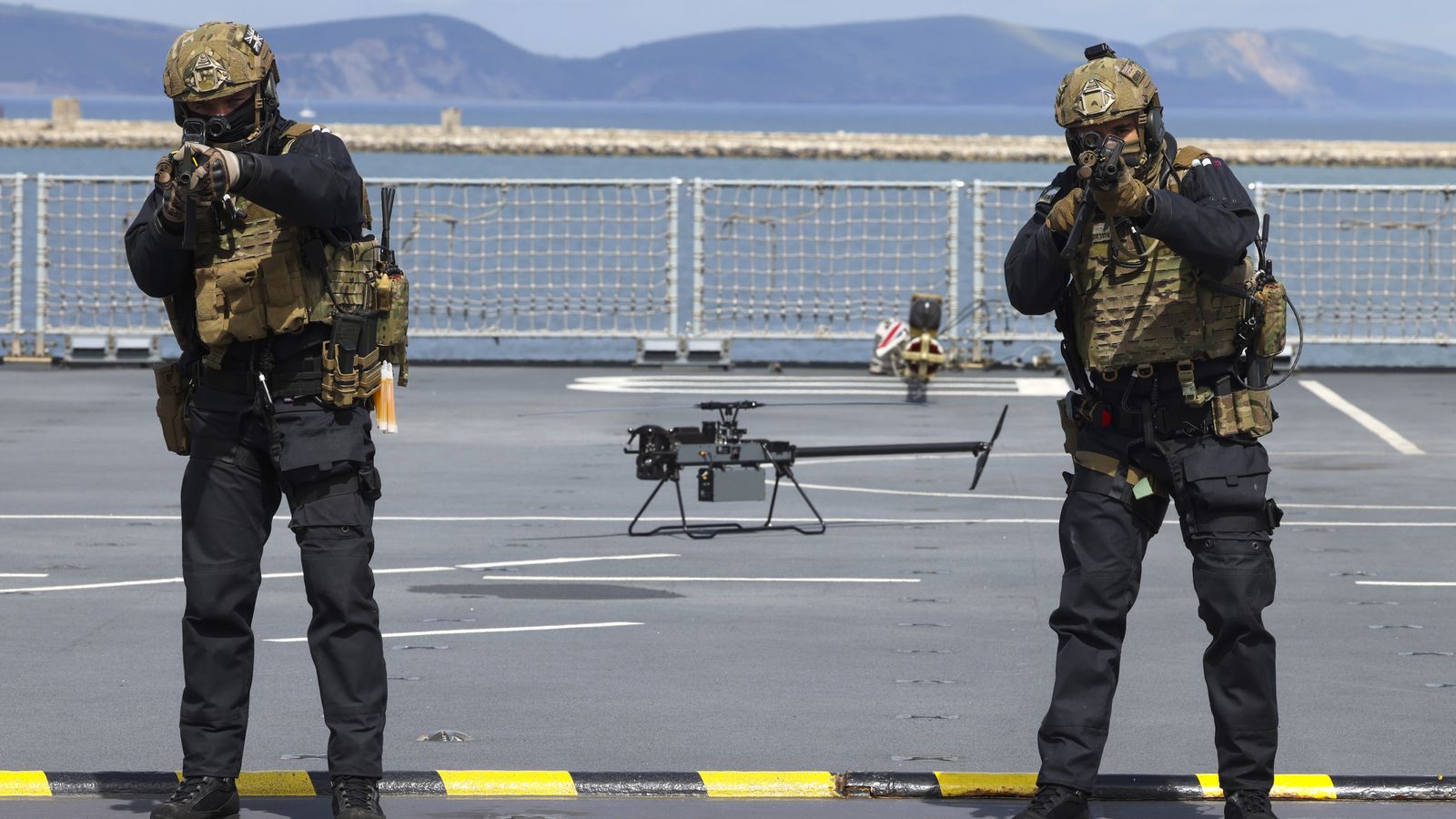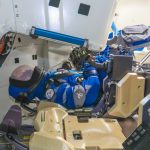In a first for the UK’s armed forces, Royal Marines have used drone swarms to assist in battle drills.
Autonomous machines were present in the air, on the sea and underwater to help the soldiers as they carried out simulated raids on missile and radar installations across the UK.
Those in charge of the trials were quick to say that the aim is not to get rid of the marines themselves, but rather to improve their performance.
“We must always remember that this tech is there to enhance commando excellence, not to replace it,” said Colonel Chris Haw, the officer in charge of the experiments.
The drills were carried out at the Electronic Warfare Tactics facility at RAF Spadeadam in Cumbria, and at Lulworth Cove in Dorset.
Named “Autonomous Advance Force 4.0”, the trials were designed to create a combined man-and-machine force to give the commandos a “battlefield advantage”.
A navy spokesman said: “In a first for UK Defence, a group of six medium-heavy lift drones were operated in one autonomously controlled swarm from a single ground control station.
“The drones were tasked with tactically re-supplying commandos with everything from ammunition for the assaulting troops, through to blood for combat medics.”
They continued: “The swarm also demonstrated significant flexibility and switched roles to conduct reconnaissance missions to provide intelligence for commando raids ashore and at sea against a hostile target, when launched from RFA Mounts Bay.”
“The autonomous systems also worked together, being tasked independently to find and identify enemy targets, accurately using their range of increasingly powerful sensors and target acquisition algorithms,” the spokesman said.
“The ultimate aim is to seamlessly embed autonomous systems on the front line to support commando forces on the battlefield.
“These experiments scrutinise tactics and develop knowledge of how the drones can and cannot be used.”
Follow the Daily podcast on Apple Podcasts, Google Podcasts, Spotify, Spreaker
First Sea Lord Admiral Sir Tony Radakin said: “Only by continued experimentation with the latest technology and innovation can we properly prepare our people for the challenges of the future.”






















